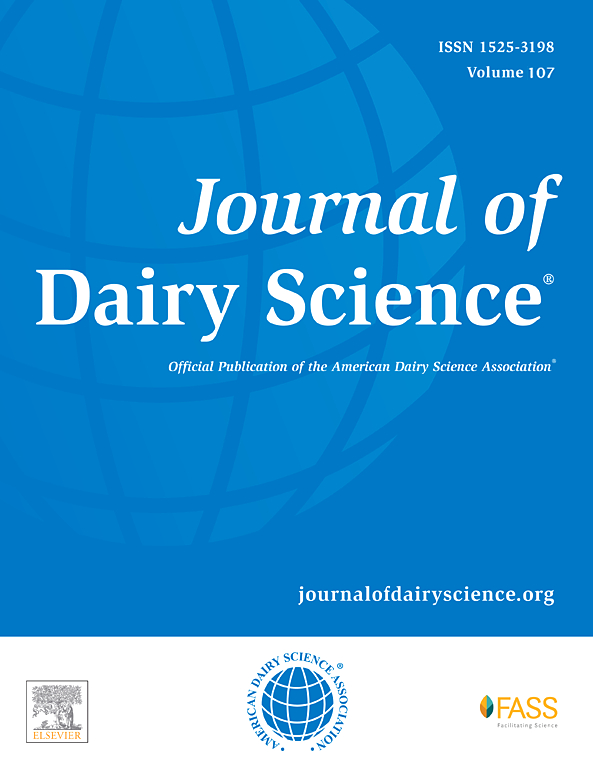Effect of 10 freshwater microalgae on in vitro methane mitigation and rumen fermentation
IF 3.7
1区 农林科学
Q1 AGRICULTURE, DAIRY & ANIMAL SCIENCE
引用次数: 0
Abstract
Agriculture is at the pivot point between anthroposphere, biosphere, and atmosphere. Innovative solutions are needed to reduce agricultural emissions and improve sustainability. Microalgae animal feed could be such a solution. This study aimed to evaluate the effects of 10 freshwater microalgae: Auxenochlorella protothecoides, Chlamydomonas pulvinate, Chlorella luteoviridis, Chlorella variabilis, Euglena mutabilis, Parachlorella kessleri, Stichococcus bacillaris, Tetradesmus acuminatus, Tetradesmus obliquus, and Tetraselmis gracilis, on ruminal methane (CH4) production, nutrient digestibility, and rumen fermentation using the in vitro Hohenheim gas test. The microalgae were cultured in a carbon dioxide (CO2) incubator at 2% CO2, at the optimal conditions for each strain. The highest producers were P. kessleri and T. obliquus, with a biomass concentration of 0.69 and 0.73 g/L·d, respectively. Their PUFA contents ranged from 33.2% to 69.1% of total fatty acids. Microalgae were tested at a 15% replacement in a control basal diet of 40.0% DM grass silage, 40.0% maize silage, 15% hay, and 5% concentrate. Data were analyzed using a mixed model in R. Ruminal CH4 production was reduced by 15.4%, 17.4%, and 16.4% in diets containing A. protothecoides, C. luteoviridis, and P. kessleri, respectively, compared with the control diet. Similarly, these diets reduced in vitro organic matter digestibility by 3.5%, 5.2%, and 5.4%, respectively. However, only A. protothecoides reduced CH4/CO2 ratio by 3.5% compared with the control diet. Propionate molar proportion was decreased by 2.4, 3.0, 2.5, and 2.5 percentage points for diets containing Ch. pulvinate, E. mutabilis, P. kessleri, and T. obliquus, respectively. Marginal effects of dietary variables were analyzed using the generalized additive model framework, revealing a negative relationship between dietary PUFA, sulfur content, and CH4 production, and a negative relationship between dietary PUFA and CH4/CO2 ratio. Incorporating high-PUFA microalgae in ruminant diets shows potential for reducing enteric CH4 emissions, warranting further investigation.
求助全文
约1分钟内获得全文
求助全文
来源期刊

Journal of Dairy Science
农林科学-奶制品与动物科学
CiteScore
7.90
自引率
17.10%
发文量
784
审稿时长
4.2 months
期刊介绍:
The official journal of the American Dairy Science Association®, Journal of Dairy Science® (JDS) is the leading peer-reviewed general dairy research journal in the world. JDS readers represent education, industry, and government agencies in more than 70 countries with interests in biochemistry, breeding, economics, engineering, environment, food science, genetics, microbiology, nutrition, pathology, physiology, processing, public health, quality assurance, and sanitation.
 求助内容:
求助内容: 应助结果提醒方式:
应助结果提醒方式:


